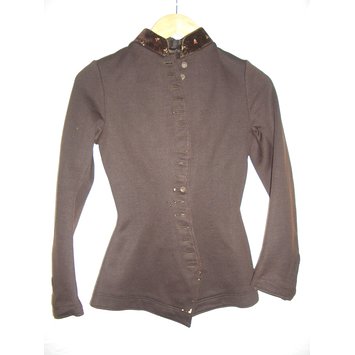In 1967 the times they were a-changing, and this was
especially true for the world of fashion.
The Old Guard was not happy—as shown by the following quotes in Time. “Those show-offs who wear dresses up to
their bottoms know nothing about fashion,” fumes one expert. “Elegance is out,” sighs "the master of elegance", Norman Norell.
What upset traditionalists the most was the miniskirt:
In the three years since it made its first real appearance in small, offbeat boutiques, it has surged onto the campuses, into offices, out on the avenue—anywhere at all that youth defiantly chooses to show its colors…. “Now, notes one San Francisco designer, “there is the micro-mini, the micro-micro, the ‘Oh, My God’ and the ‘Hello, officer.”
This is where Rudi Gernreich comes in. Born in Vienna and working in California, Rudi Gernreich was one of the more innovative and avant-garde designers of the 1960. He had a background in modern dance and was influenced by the Bauhaus movement on the one hand, and American designer Claire McCardell on the other.
He also had a gift for self-publicity:
No designer these days reveals more than California’s Rudi Gernreich, 45, the man who shocked the world in 1964 with his topless bathing suit.
Life, 10 July 1964
(Life, in 1964,
described it as an “absurd garment”:
The suit is no good for swimming, because it falls off, and it is no good for sunning, because it leaves disastrous strap marks. It is no good for getting your picture in the papers any more, because too many people have tried that, and anyhow the cameraman is likely to turn timid and photograph you from the back. As for the front view of the suit, it proves only that, whatever else she may be, a bare-breasted woman in broad daylight is chiefly unnerving.
…Nonetheless, he managed to sell around 3,000 copies at $25
each!)
But back to 1967, and our article in Time:
Gernreich .. made his mark by being not only the first U.S. designer to raise skirts well above the knee but also the first with such trend-setting styles as colored stockings, now so overwhelmingly popular, which he called “the total look”, with dress, stockings and sometimes a hood—all matching. Along the way he has introduced vinyl clothes developed out of a material that looks completely “today” and a series of freeing designs aimed at giving back the female body its natural look and curves, including his knit tank suits, his No-Bra bra, and sheer, see-through nylon blouses.In other words, he pioneered many things seen as typically sixties today. Looking ahead a bit, he was also an enthusiastic promoter of unisex clothing (popular from around 1968 to the early seventies).
As fashion grows steadily freer and less inhibited, he hops that whole costumes will become inexpensive enough to be worn briefly, then thrown away on a whim. Nudity? "I think a great deal more if it is going to be around—yes, including the topless." Skirts, he believes, are finished and will soon be replaced by tunics combined with tights into two-piece garments. But most of all what Gernreich insists upon is that the dress should never again dominate the woman. "Clothes are just not that important," says he. They're not status symbols any longer. They're for fun."Time concludes its article with Gernreich looking ahead. His predictions are a bit hit and miss—as predictions usually are. He seems to anticipate fast fashion (without foreseeing the social and economic problems it would cause). On the other hand, status dressing came roaring back in the 1980s, never to quite go away again. "Nudity" comes and goes, with bare flesh being more fashionable in some eras than others. (It should be noted, however, that Gernreich disliked sexualised nudity, seeing it as the flip side of viewing the body as shameful.)
Gernreich epitomised the "space age" fashions of the 1960s, so it's not surprising that though he kept designing until his death in 1985 he was never quite as newsworthy again as he was in that decade. By the 1970s fashion was starting to take its inspiration from the past instead of the future. In 1975 however, Gernreich designed the costumes for the British TV series Space 1999. Now that's futuristic!
"Up, Up & Away". Time, 1 December 1967
Shana Alexander "Fashion's best joke on itself in years". Life, 10 July 1964



















